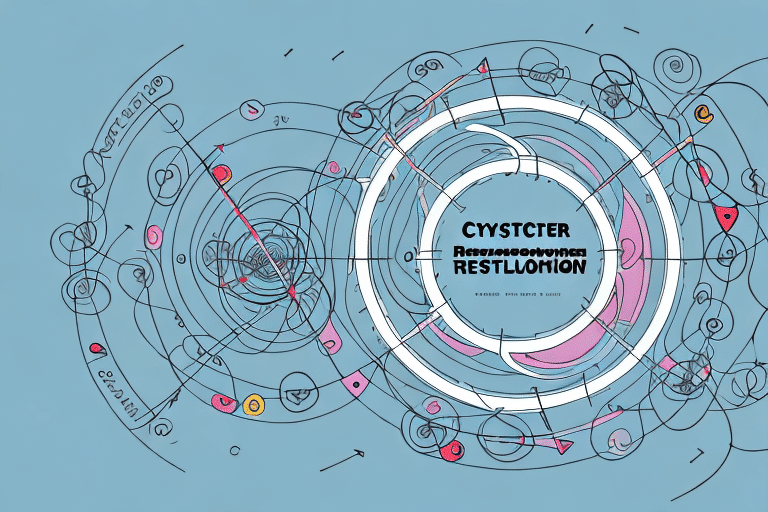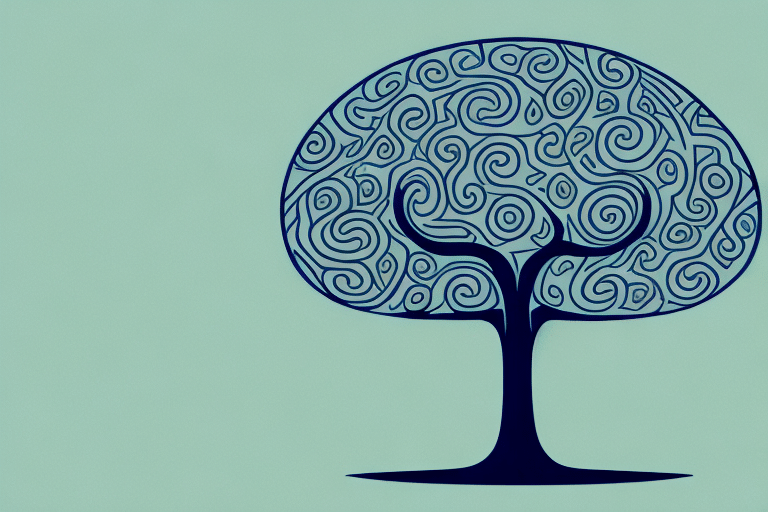Understanding the Customer Retention Lifecycle
Customer retention is the lifeblood of any successful business. It’s the art of keeping existing customers coming back for more and staying loyal to your brand. In today's competitive business landscape, keeping customers happy and engaged is more important than ever. This article delves into the intricacies of the customer retention lifecycle and provides insights into developing a customer retention strategy that will work for your business.
Why Customer Retention is Critical for Business Success
Acquiring new customers is expensive and time-consuming. Studies have shown that it can cost up to five times more to acquire a new customer than to retain an existing one (Bain & Company). Moreover, retaining existing customers significantly impacts the bottom line—existing customers tend to spend more and are more likely to refer others to your business.
Investing in customer retention goes beyond providing a good product or service. It involves building lasting relationships, understanding customer needs, and creating positive experiences throughout their entire journey with your brand.
One key benefit of customer retention is increased loyalty. When customers feel valued and appreciated, they are more likely to continue doing business with your company. This leads to a steady stream of repeat business, stabilizing revenue and providing a solid foundation for growth. Additionally, loyal customers offer valuable feedback, help improve products or services, and become brand advocates, attracting new customers through word-of-mouth.
The Customer Retention Lifecycle: Stages and Strategies
The Four Stages of the Customer Retention Lifecycle
- Acquisition: Attracting potential customers to your business.
- Activation: Encouraging customers to take action and use your products or services.
- Retention: Building long-lasting relationships with your customers.
- Winback: Re-engaging lost customers and converting them into loyal advocates.
Each stage of the customer retention lifecycle requires a distinct approach and strategy:
- Acquisition: Focus on advertising and marketing efforts to attract new customers.
- Activation: Offer promotions or incentives to encourage customers to try your products or services.
- Retention: Utilize personalized communication and excellent customer service to maintain strong relationships.
- Winback: Implement targeted strategies to address reasons for customer departure and offer solutions to bring them back.
Strategies for Each Stage
Developing tailored strategies for each stage enhances the effectiveness of your retention program. For instance, during acquisition, referral programs and social media marketing can be highly effective. In the activation stage, seamless onboarding and personalized support are crucial. Retention strategies may include loyalty programs and regular engagement, while winback strategies might involve special offers and addressing customer grievances.
Identifying Customer Stages and Behavior
Identifying where your customers are in the retention lifecycle is crucial for creating a successful strategy. Understanding which customers are at risk of leaving, who your loyal fans are, and who needs extra attention allows for more targeted and effective actions.
Utilizing Customer Relationship Management (CRM) Systems
A CRM system tracks customer behavior, purchase history, and other relevant data, enabling you to segment your customers and personalize your messaging to address their specific needs. Tools like Salesforce CRM and HubSpot CRM offer robust features for customer segmentation and behavior analysis.
Analyzing Customer Engagement
By analyzing interactions with your website, social media channels, and email campaigns, you can determine customer engagement levels. Tools like Google Analytics and Socialbakers help track engagement metrics, enabling you to tailor communication and marketing efforts accordingly.
Tools and Technologies for Customer Retention
Leveraging the right tools and technologies is essential for tracking and analyzing customer behavior, which in turn informs your retention strategies.
Customer Relationship Management (CRM) Systems
CRM systems are the cornerstone of any customer retention program. They help you track customer interactions, manage relationships, and personalize communication. Popular CRM platforms include Salesforce, HubSpot, and Zendesk.
Analytics and Feedback Tools
Tools like Google Analytics and Hotjar provide insights into customer behavior on your website. Additionally, feedback tools such as SurveyMonkey and GetFeedback allow you to gather and analyze customer feedback effectively.
Creating and Implementing a Customer Retention Plan
Developing a customer retention plan requires a strategic approach that aligns with your business goals and customer needs.
Defining Retention Goals
Start by defining clear retention goals. Determine the metrics you want to improve, such as retention rate, churn rate, and customer lifetime value (LTV). Setting specific targets helps in measuring the success of your retention strategies.
Segmenting Your Audience
Segment your audience based on factors like purchase history, behavior, and preferences. This allows for personalized marketing and communication, ensuring that your efforts resonate with different customer groups.
Developing Personalized Messaging
Create personalized messaging and campaigns tailored to each segment's specific needs and behaviors. Personalized approaches lead to higher engagement and better retention outcomes.
Case Studies: Successful Customer Retention Strategies from Top Brands
Examining successful customer retention strategies from top brands provides valuable insights and inspiration for your own business.
Starbucks' Loyalty Program
Starbucks’ loyalty program is one of the most successful in the industry. It rewards customers for their continued patronage and provides a personalized experience through mobile ordering and rewards tracking. This approach has significantly increased customer retention and engagement.
Amazon's Personalized Recommendations
Amazon utilizes personalized recommendations and targeted messaging to keep customers engaged. By analyzing purchase history and browsing behavior, Amazon tailors product suggestions, enhancing the shopping experience and encouraging repeat purchases.
Common Pitfalls to Avoid When Implementing a Customer Retention Strategy
While implementing a customer retention strategy, it's essential to be aware of common pitfalls that can undermine your efforts:
- Not Personalizing Messaging: Generic communication fails to engage customers effectively.
- Not Analyzing Customer Data: Without data analysis, it's challenging to understand customer behaviors and needs.
- Ignoring Customer Feedback: Customer feedback is crucial for improving and tailoring your offerings.
- Not Offering Enough Value: Customers need to feel they are receiving value beyond their purchases.
- Not Optimizing the Customer Experience: A seamless and positive customer experience is vital for retention.
To avoid these pitfalls, focus on developing a strong customer-centric culture, invest in the right tools and technologies, and continually monitor and analyze customer behavior and feedback.
Measuring Success: Key Metrics for Evaluating Your Customer Retention Program
Measuring the success of your customer retention program is critical for understanding its effectiveness and making necessary adjustments. Key metrics to track include:
- Retention Rate: The percentage of customers who continue to do business with you over a specific period.
- Churn Rate: The percentage of customers who stop using your products or services during a given time frame.
- Customer Lifetime Value (LTV): The total revenue a business can expect from a single customer account.
- Customer Engagement: Measures how actively customers are interacting with your brand.
- Referral Rate: The percentage of new customers acquired through referrals from existing customers.
Utilize CRM systems and analytical tools like Tableau and Microsoft Power BI to monitor these metrics regularly and adjust your strategies based on the results.
Future Trends in Customer Retention and Their Impact on Your Business
The future of customer retention is evolving with advancements in technology and changing consumer behaviors. Staying ahead of these trends can give your business a competitive edge.
Artificial Intelligence and Machine Learning
AI and machine learning are increasingly being used to personalize messaging and make more informed decisions about customer behavior. These technologies enable businesses to predict customer needs and tailor experiences accordingly.
Rise of Voice Assistants and Chatbots
Voice assistants and chatbots are enhancing customer support by providing more personalized and convenient interactions. These tools can handle queries in real-time, improving customer satisfaction and retention.
Omnichannel Engagement
Customers expect a seamless experience across all channels—online, mobile, and in-store. Implementing an omnichannel strategy ensures consistent and personalized interactions, fostering stronger customer relationships.
Building a Company Culture Focused on Customer Retention
Creating a company culture that prioritizes customer retention is essential for long-term success. It requires commitment from leadership and a dedication to a customer-centric approach across all levels of the organization.
Encouraging Open Communication and Collaboration
Facilitate open communication and collaboration between teams that interact with customers. Sharing insights and feedback across departments leads to a more cohesive and effective retention strategy.
Providing Training and Resources
Equip your employees with the necessary training and resources to understand the importance of customer retention. Emphasize the role each team member plays in enhancing customer satisfaction and loyalty.
Recognizing and Rewarding Commitment to Retention
Recognize and reward employees who demonstrate a commitment to retaining customers. Incentives and recognition programs can motivate staff to prioritize customer-centric actions.
Conclusion
The customer retention lifecycle is a critical framework for building long-lasting relationships with your customers. By understanding the stages of the lifecycle and implementing effective strategies and tactics, you can create a successful customer retention program that adds significant value to your business. Keep in mind that success requires ongoing dedication and a commitment to serving your customers.




















